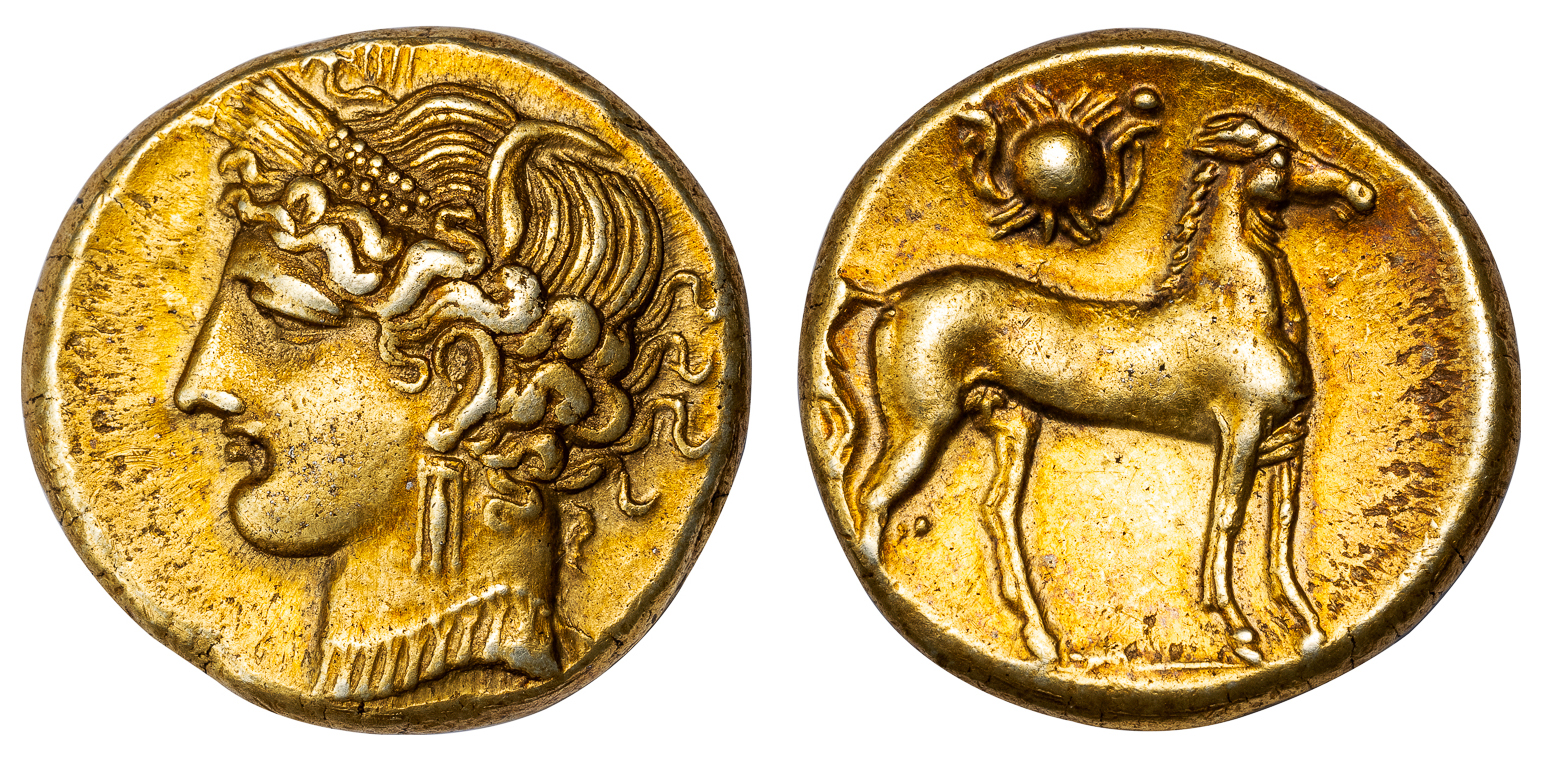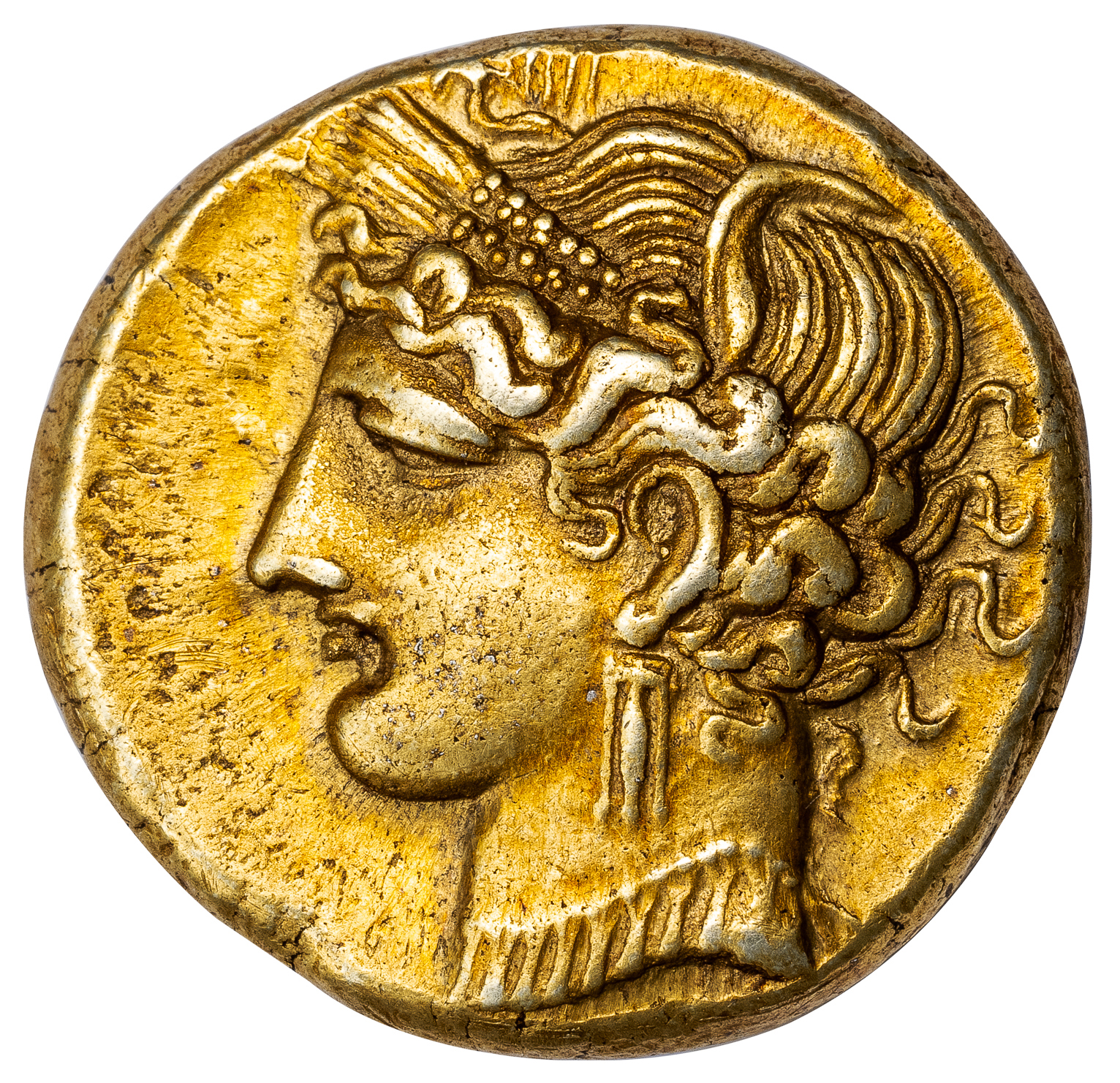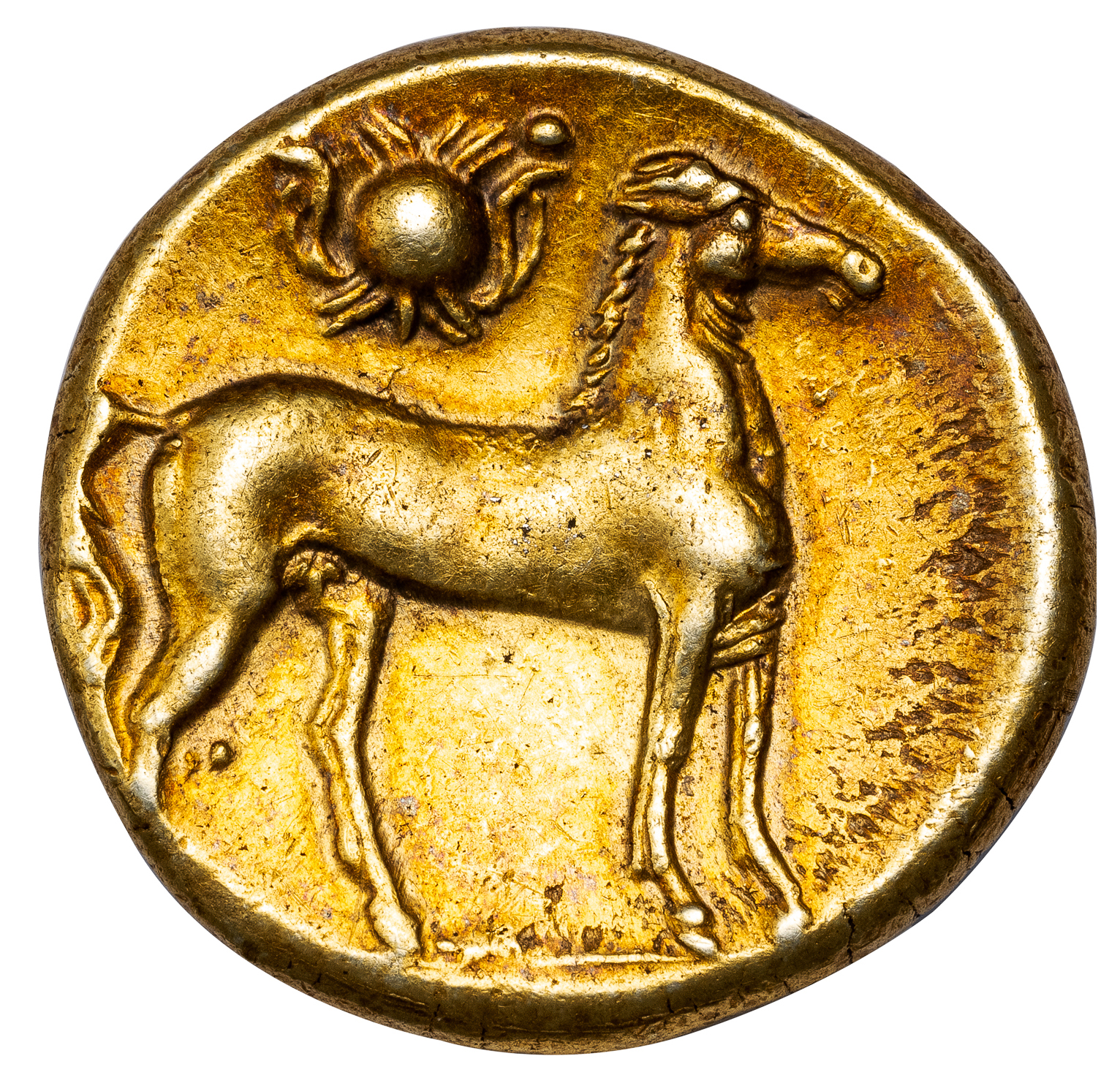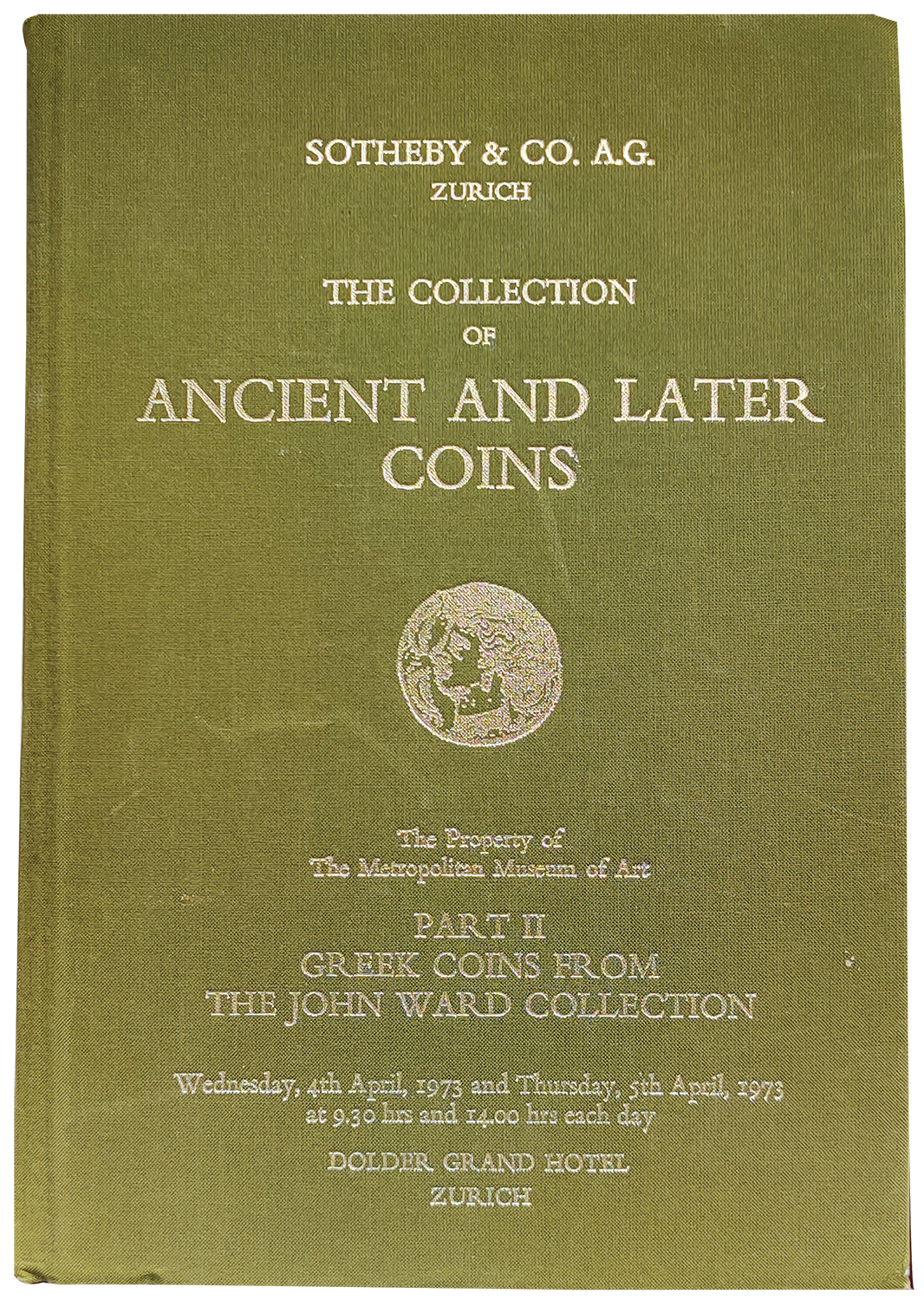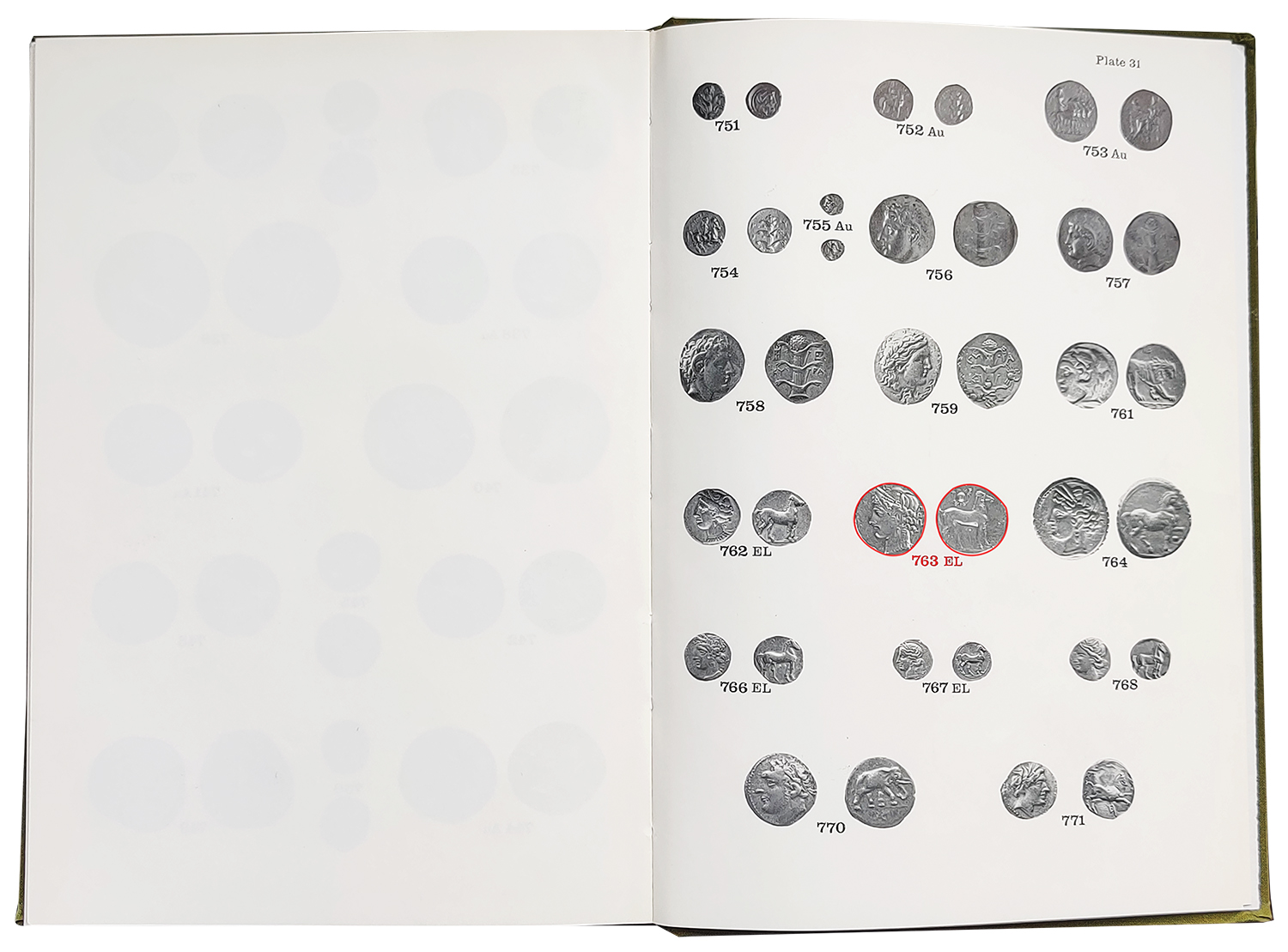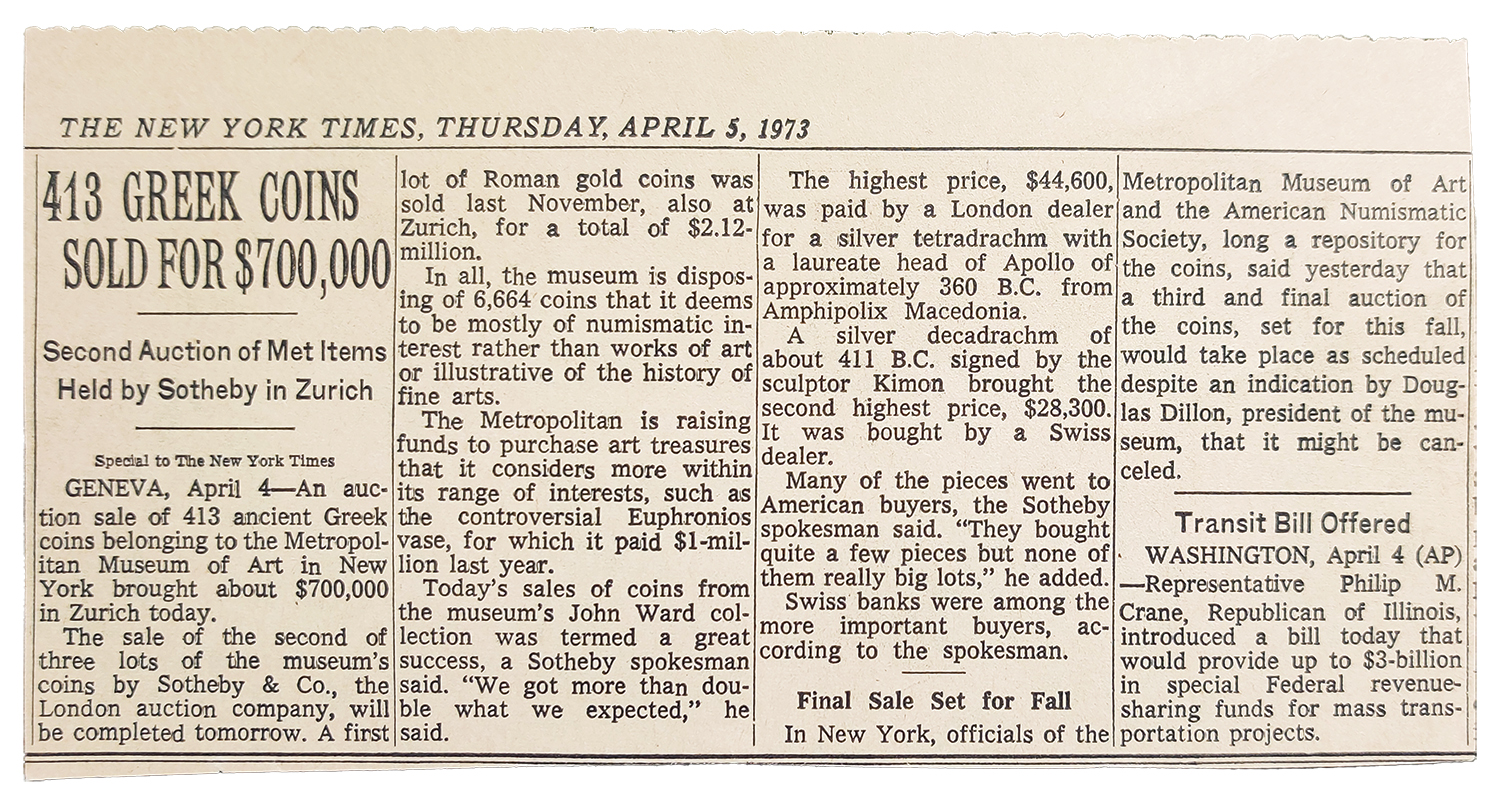CARTHAGE ELECTRUM TRIHEMISHEKEL OF THE FIRST PUNIC WAR – EX VELKOV, WARD, METROPOLITAN MUSEUM, PIERPONT MORGAN AND ROTHSCHILD COLLECTIONS – XF GREEK ZEUGITANA COIN (Inv. 20308)
SOLD
20308. ZEUGITANA. CARTHAGE. Ca. 264–241 BC.
Electrum 1 1/2 Shekels (Trihemishekel), 10.90 g, 22 mm. Issue of the First Punic War, struck at Carthage.
Obv. Heat of Tanit left, wearing wreath of grain, a triple–pendant earring and a necklace with pendants. Rev. Horse standing right on an exergue line, double uraeus flanking a solar disk with rays above, pellet in front of right rear leg.
Jenkins & Lewis, Group Xa, 412–18 (unlisted dies).
Published: Ward Collection, no. 921.
Ex Grapevine Collection, purchased from Ed Waddell in 2012 = ex James and Sneja Velkov Collection, Vinchon, 11/25/1994, lot 32 = ex John Ward / Metropolitan Museum of Art Collection, Sotheby’s Zurich, 4/4/1973, lot 763 = ex J. Pierpont Morgan collection (who donated the Ward collection to the Metropolitan Museum in 1905) = ex “Late Collector” (Baron Ferdinand de Rothschild who died in 1898), Sotheby, Wilkinson and Hodge, 5/28/1900, lot 489.
XF, deep gold toning with some iridescent highlights.
Electrum issues like this shekel multiple were produced during the long First Punic War (264–241 BC), which was fought between Carthage and Rome over control of Sicily and southern Italy. They appear to have been struck primarily to pay North African mercenaries at the end of their service in the conflict and were sometimes overstruck by rebels during the so–called Truceless War (241–238/7 BC)—a major mercenary uprising against Carthage engendered by defeat in the First Punic War. The declining standard of gold fineness in electrum coins like the present piece suggests that they were probably struck in the 240s, as the tide of the war turned against Carthage and the struggle against Rome taxed the resources of the city.

